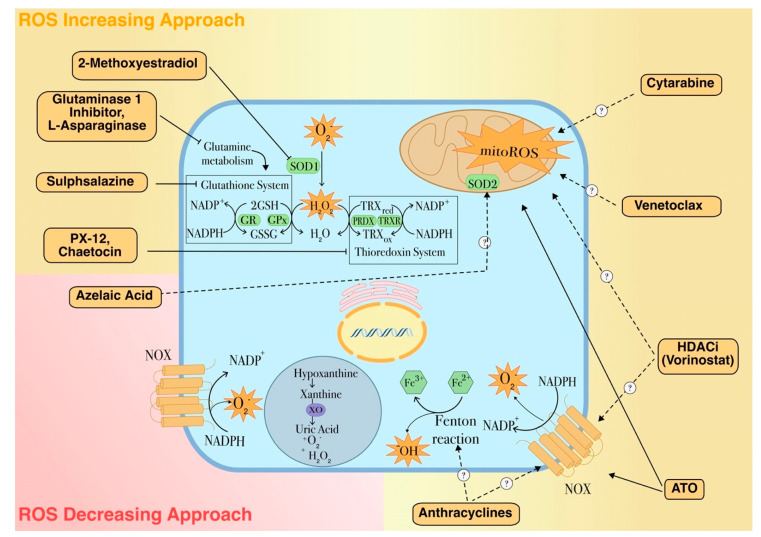Figure 4.
ROS-dependent therapeutic agents for leukemia treatment. The mechanism of action and the molecular targets of pro- or antioxidant drugs used in leukemia are shown. Along with conventional treatments, this figure depicts some promising examples of these approaches. 2-Methoxyestradiol (2ME2), a naturally occurring estrogen metabolite with antiproliferative and antiangiogenic activities is able to induce apoptosis through a ROS-dependent mechanism. Also, this drug is able to target LSCs by inhibiting the transcriptional activity of HIF-1α, that is found over-expressed in LSCs under hypoxic conditions, thus down-regulating pro-leukemic HIF-1α target genes, including the vascular endothelial growth factor (VEGF) [130,131]. L-asparaginase treatment has recently been reported to induce autophagy by promoting apoptosis and cell growth inhibition in AML cells and has synergistic effects with conventional AML chemotherapies [132]. The thiodioxopiperazine natural product chaetocin (SUV39H1 inhibitor) is a competitive substrate and inhibitor of thioredoxin reductase and in this way induces cellular oxidative stress. In addition, as inhibitor of SUV39H1, a co-factor of the transcription factor RUNX1 which has an important role in the regulation of proliferation and self-renewal of hematopoietic stem cells, chaetocin also promotes differentiation of AML cells and has synergistic effects with HDAC inhibitors [133,134]. Dotted arrows with question marks indicate plausible mechanisms of action. Full and dashed arrows indicate well-established or hypothetical molecular mechanisms, respectively.

